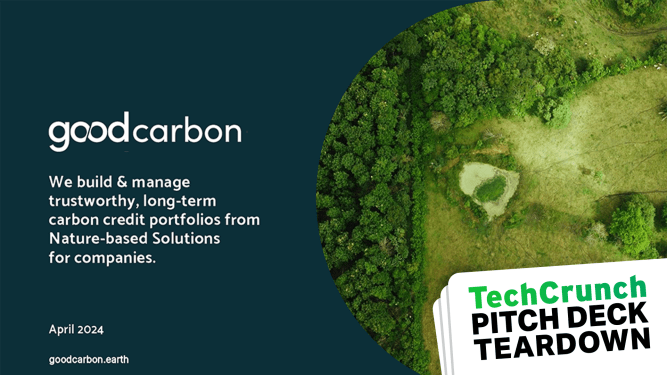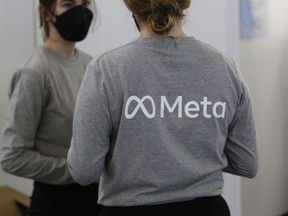Why GoodCarbon’s Pitch Deck Was an Extended Exercise in Futility
Pitch decks are meant to be concise, compelling, and direct. They’re supposed to help investors quickly grasp your idea, its potential impact, and why it’s worth their time—and money. But sometimes, they take a back seat to creative formatting or overthinking. And when that happens, you end up with a presentation so long and repetitive that it feels more like an extended shopping list than a strategic business plan.
GoodCarbon’s pitch deck is a prime example of this problem. In what could be described as an Extended Exercise in Futility, the startup spends more than half its slides explaining its problem—and how they’re solving it—without ever clearly stating why their solution matters or how it stands out from competitors.
At first glance, the company presents itself as a carbon-credit platform aiming to make climate action mainstream. It highlights the growing impact of climate change and the role that individuals and businesses can play in addressing it. Then, it spends several slides outlining its “problem”—from deforestation to methane emissions—and its proposed solution: an app that connects users with verified carbon credits.
But here’s the thing: the problem is so well-known (and the solution so vague) that most of GoodCarbon’s pitch deck feels redundant. The company could have gotten by with far fewer slides and focused on what makes its approach unique or innovative—something that would set it apart from competitors, regulators, or other players in the market.
For instance, instead of spending five slides explaining why climate change is a problem (and how carbon credits can help), GoodCarbon could have zeroed in on what sets it apart. Is it the transparency of its ratings? The ease of use of its platform? The fact that it works with verified organizations?
And then there’s the team slide, which feels more like an afterthought. It’s supposed to highlight leadership credentials and prior accomplishments, but instead, it looks like a list of execs without any meaningful details about their expertise or past successes.
The product itself isn’t even fully defined in the slides—how does someone get verified carbon credits? What features does the app offer? Is there anything built beyond a figment of Figma’s imagination?
GoodCarbon also fails to address the key pain points effectively. While it references stats and potential market size, these are buried under layers of problem slides without clearly connecting them to why an investor should care.
A common theme across many startups is that investors need to believe in the product before they invest. But GoodCarbon’s pitch deck starts with a problem and works backward—without ever showcasing a winning solution or any evidence of traction in the market.
One of the most telling aspects of the presentation is how it frames the problem as so pressing that any solution must be considered. This mindset can be useful early on, but it often leads to over-explaining what’s already known and under-delivering on what needs to be demonstrated.
In conclusion, GoodCarbon’s pitch deck fails because it prioritizes verbose explanations of a well-known problem over the clear articulation of its unique value proposition and why an investor should support its solution. It’s not just about being long; it’s about being unhelpful. A good pitch deck is engaging, focused, and leaves no stone unturned—GoodCarbon’s does the opposite.
If you’re reading this, I’d suggest trimming the deck to under 15 slides (unless you have a compelling case for more). Focus on clearly stating what your product does, why it matters, and how you plan to execute on its vision. Then, tailor each slide to drive home a specific point rather than repeating yourself.









